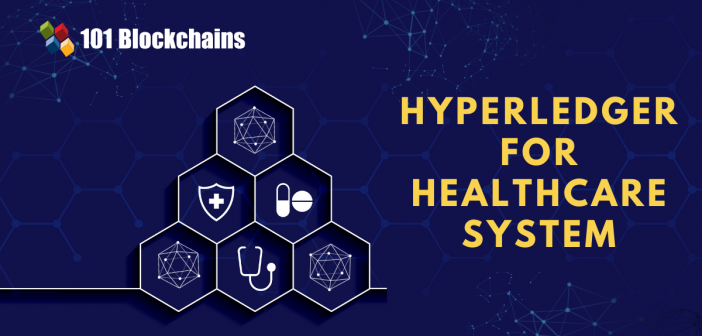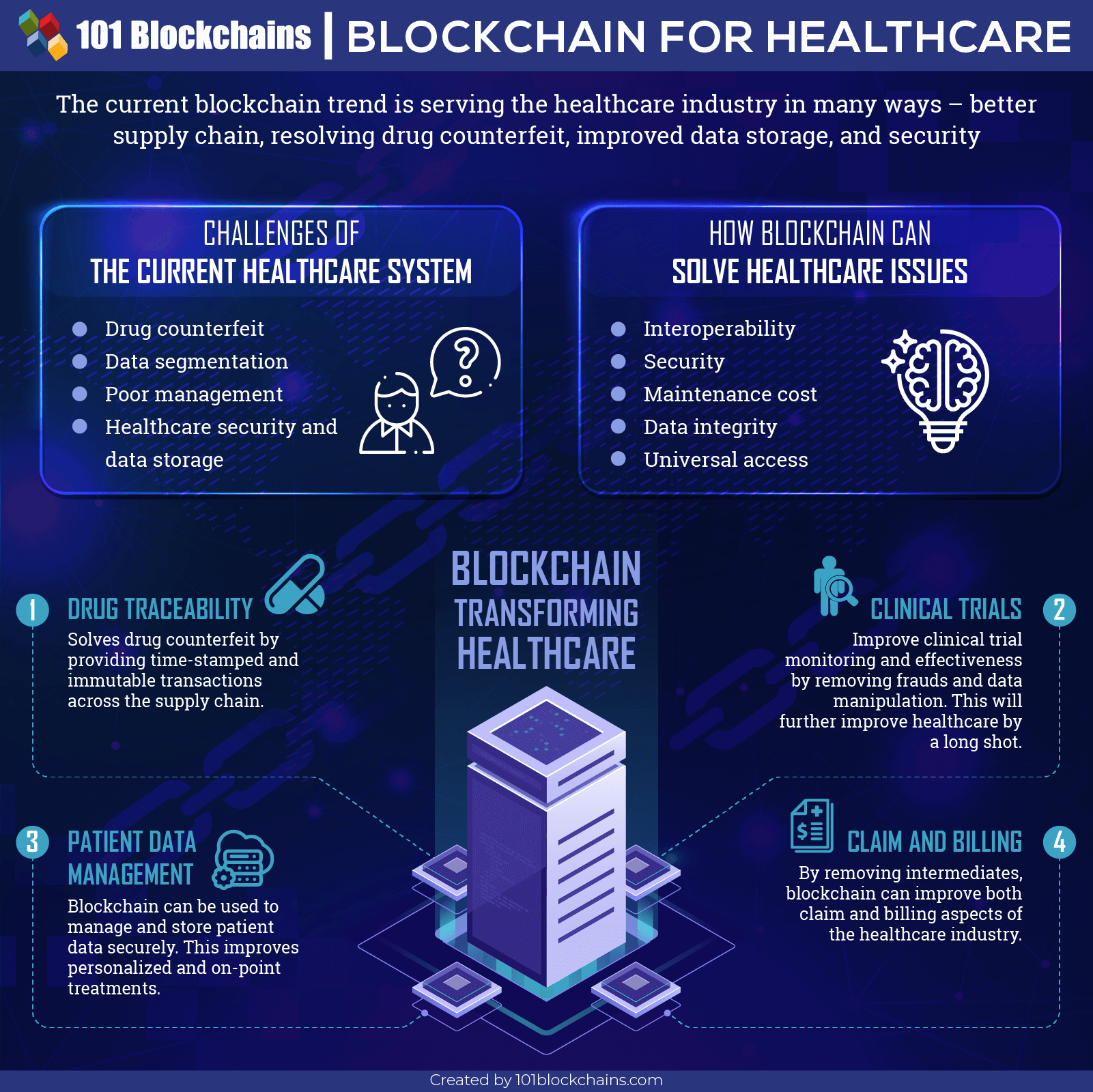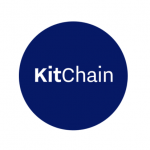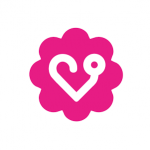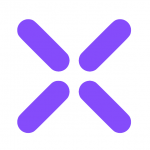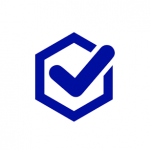Curious about Blockchain and its implications on the healthcare system?
Blockchain has quickly become one of the most popular topics on the internet, as well as for industries such as finance, banking, supply chain, and healthcare, owing to its ability to provide entirely secure, transparent, and dependable transactions.
The rate of digitization in the healthcare industry has been a driving force, especially given the large amount of sensitive data that is stored online.
When it comes to the role of Blockchain in healthcare, it is more than just the usually focused security and transparency. In essence, Blockchain ensures that the integrity of data is maintained and that the ownership of data lies with the users rather than the healthcare institutions.
However, considering the huge number of Blockchain platforms in the market, a very obvious question arises – Which blockchain-based approach is best for supporting decentralized healthcare applications?
Hyperledger, in particular, is a blockchain-based platform that has been used to implement innovations in healthcare data management! Hyperledger Fabric Healthcare applications have become a prominent blockchain implementation.
Let’s take a look at why Blockchain is needed in the healthcare industry before digging into Hyperledger healthcare applications.
Enroll Now: Hyperledger Fabric Development Course – Intermediate Level Course
Need For Blockchain In Healthcare Industry
Everyone was overwhelmed by healthcare headlines throughout 2020 and 2021, especially since COVID-19 claimed the lives of millions of people amidst the shady-looking statistics that every nation’s administration desired to represent. While medical infrastructure dominated healthcare news, the need of maintaining authentic information infrastructure in the healthcare ecosystem received less attention.
The current healthcare information architecture is highly fragmented, with crucial data dispersed across various systems and inaccessible to the majority of people. Falsifying reports and withholding essential information from patients are examples of medical fraud. Since the current database is stored in a physical system, anyone with access to it can modify the information as needed.
In addition, a healthcare provider’s ability to give optimal health results to patients in real-time is hampered by this inconsistent and false set of data.
Blockchain technology, serving as the foundation for a worldwide electronic health record, provides natural solutions to these issues. It provides a secure digital environment capable of storing and authenticating patient information as well as providing public access to all healthcare information.
Simply put, with the central authority removed, all users will have complete power over all transactions and information. In essence, Blockchain will provide the healthcare business with security, scalability, and data privacy.
Blockchain’s applicability in healthcare is extremely disruptive. This revolutionary journey would be implemented in a step-by-step manner, as it was in Estonia previously. To begin, Estonia successfully implemented blockchain technology in 2012 to secure health data. Subsequently, in 2021, over 95% of the country’s healthcare information is ledger-based.
Must Read: How Could Blockchain Disrupt Healthcare?
If Estonia can, so can other countries and that brings us to an important question –
What are the Possible Applications of Blockchain in Healthcare?
-
Data Security
The blockchain’s protected network provides an edge over the old approach in terms of securing health information. Data can’t be modified or erased after it’s been added to the blockchain. Even if the data needs to be updated, a new record is created that includes all prior entries.
Furthermore, each record is accessible through a unique private key that is controlled by the patient. Since each document is represented by a hash, verifying the modifications to the original hash ensures the highest level of transparency and verifiability.
-
Health Insurance Claims
Another area where Blockchain is uniquely adapted is the sphere of health insurance claims. When its data is seamlessly connected with the Blockchain network, processing times will be accelerated, fraud risks will be reduced, and time and money will be saved. This further allows insurance claims to be processed in real-time.
-
Supply Chain
From real-time tracking of medical supplies from manufacturers to minimizing the danger of human mistakes in remitting transactions, Blockchain’s integration with an organization’s supply chain can lead to improved productivity and quality control. It can also be used to figure out how much labor costs and how much carbon emissions are generated by supply chain functions. Organ transplant is another use case of a Blockchain-based supply chain in healthcare that is becoming extremely popular.
-
Medical Research
Aside from the obvious advantages, the usage of electronic health records might be expanded to industry research. Medical research can only be deemed to be successful if the data is of high quality and readily available.
The ownership rights granted to patients in Blockchain can be used for research purposes, but only if the information is subject to adequate consent. It would enable research institutions to compile a slew of open data in order to advance clinical research and public health reporting.
To sum up, blockchain qualities like decentralization, data provenance, reliability, and smart contract support are ideal for the advancement of modern healthcare systems. Hyperledger Fabric healthcare system takes it one step further by introducing modularity to the ecosystem.
While the first generation of blockchain frameworks, such as Bitcoin, was designed primarily to facilitate cryptocurrency transactions, more recent blockchain-based applications have made themselves available for healthcare uses as well.
Different blockchain frameworks, as well as the technical requirements of the healthcare business, should be considered while developing Hyperledger healthcare applications.
The privacy of patients and their data, for example, is one of the most significant requirements in the creation of Hyperledger healthcare applications. While standard blockchain frameworks demand complete transparency, the European General Data Protection Regulation (GDPR) governs public access to such information.
Furthermore, the scalability of transactions is another crucial necessity of the healthcare industry that must be met by an ideal blockchain infrastructure. Transaction validations and consensus protocols are critical in determining transaction scalability in healthcare applications.
Know more about blockchain in healthcare with this detailed graphic-
Please include attribution to 101blockchains.com with this graphic. <a href='https://101blockchains.com/wp-content/uploads/2019/01/blockchain_for_healthcare.png' border='0' /> </a>
Various Blockchain platforms to Develop Healthcare Applications
Bitcoin
Working on a PoW consensus, Bitcoin is a permissionless blockchain network where there are no restrictions on anyone starting mining to create a block. Each user, also represented as nodes, holds a copy of the identified ledger. Therefore, making it possible for every user to oversee every transaction.
This type of public blockchain network is not suitable for healthcare applications since it is vulnerable to privacy and security breaches. Furthermore, the time it takes to reach a consensus can have an effect on the platform’s ability to scale transactions.
Another key feature that Bitcoin lacks is the facility to execute smart contracts, without which, dreaming about healthcare application is near to impossible.
Apart from that, how bitcoin comes into the picture for the healthcare system is by providing a seamless, transparent, and instant financial service.
Ethereum
Although Ethereum solves the major problem of supporting the execution of smart contracts, this public blockchain network still lacks behind on a few important considerations required to develop efficient healthcare applications.
Ethereum smart contracts are often written in Solidity Programming, an Ethereum-specific programming language that requires a developer to understand in order to construct the application. Furthermore, its consensus process has a high transaction cost, as well as a higher risk of security vulnerability and scalability.
Apart from these, platforms like Corda, Quorum, Hedera, and EOS are also being used in one way or the other for creating a Blockchain-powered healthcare system but Hyperledger fabric healthcare stands as the best option.
Enroll Now: Ethereum Development Fundamentals Course
Hyperledger As The De Facto Platform
Before analyzing why Hyperledger has achieved a dominant position as the go-to platform for developing Hyperledger healthcare applications, let’s understand what Hyperledger really is!
What is Hyperledger?
Hyperledger is an open-source community hosted by the Linux Foundation that aims to provide appropriate frameworks, rules, libraries, and tools for establishing global enterprise blockchain initiatives.
It was founded in 2015 to facilitate industry-wide collaboration that could be used across different industry sectors to promote efficiency, performance, and scalable transactions.
Leading businesses from different fields of interest such as finance, banking, supply chain, and even the Internet of Things (IoT) have been collaborating on a global level.
While Hyperledger is sometimes misidentified as an organization or as a cryptocurrency network, this isn’t the correct attribution for its organizational structure. Instead, its organizational structure provides the foundation for constructing a variety of blockchain-based solutions for various industrial uses.
Different Hyperledger projects, such as Hyperledger Fabric, Hyperledger Beru, and Hyperledger Sawtooth, follow the Hyperledger design process and adhere to the rigorous security criteria.
Take a deep dive into common hyperledger terms with the hyperledger flashcards!
Why is Hyperledger Healthcare System better?
As it considers developers’ needs for a complete toolset that can swiftly implement a variety of privacy and security standards, Hyperledger is an excellent fit for healthcare applications. Additionally, it has comprehensive control over smart contracts that may be run in a variety of computer languages, including Node.js and Javascript.
While Bitcoin and Ethereum can complete seven and fifteen transactions per second, respectively, Hyperledger outperforms the competition with a transaction speed of up to 3000 transactions per second. It does not use cryptocurrencies as a motivator. Another advantage is that it has a high transaction throughput and a cheap transaction cost.
Hyperledger Fabric is the most comprehensive blockchain framework accessible when compared to other blockchain frameworks.
Are you preparing for your Hyperledger interview? Here’s a quick guide to the top Hyperledger interview questions and answers to help you prepare for the interview.
Hyperledger Healthcare Projects
It is indisputable that blockchain has the potential to transform the healthcare industry. Without jeopardizing security, blockchain might be used not just to provide patients with secure access to comprehensive medical treatment, but also as a great way to keep the healthcare system’s whole supply chain running smoothly.
Below is the list of some of the best applications of Hyperledger in Blockchain:
1. KitChain
KitChain is a Blockchain-based pharmaceutical clinical supply solution that lowers the healthcare system’s reliance on paper trails. Rather, by constructing a security and trust framework, it focuses on creating an immutable record for shipment and event tracking.
Moreover, its collaborative model allows multiple industry-leading pharmaceutical companies such as Pfizer, UPS, and GSK to work together within a common supply chain model.
Also Check: Top 10 Hyperledger Development Tools 2021
2. MyClinic.com
Medicalchaim was one of the first Hyperledger healthcare enterprises to join the Hyperledger ecosystem, with the goal of providing patients with complete access to view and share their medical data. The prospect of connecting with the world’s greatest healthcare practitioners boosted this ecosystem even more.
Through its native token, MedToken, Medicalchaim’s first application, MyClinic.com, allows patients to schedule appointments, video chat with their doctors, and even see medical results (MTN).
The goal of MyClinic.com is to create a more meaningful relationship between doctors and patients while also expanding its scalability to international customers.
3. Axuall
Using the Sorvin network and Hyperledger Indy framework, Axuall enables real-time verification of identities and credentials. The main motivation for creating Axuall was to allow doctors to spend more time practicing medicine rather than wasting time on unnecessary paperwork.
Axuall’s digital network would allow physicians to participate in associated healthcare systems through a completely compliant credential set, reducing the time-consuming job of filling out paperwork.
The Hyperledger Indy cryptographic architecture is critical in ensuring the legitimacy of a physician’s credentials.
The latest reports predict the collaboration of Axuall and MetroHealth that will further allow them to manage and transfer information through an established network.
Are you looking for the best Hyperledger use cases? Check out this guide to explore Hyperledger by going through its use cases and popular case studies.
4. MELLODDY
The MELLODDY Project is a drug discovery initiative that intends to scale up machine learning techniques. It accomplishes this through the use of Amazon Web Service technologies, which allow only non-sensitive data to be transmitted while the central dispatcher allows each partner to share a common model.
Hyperledger Fabric’s Substra comes into play to facilitate the traceability of the operations that ensures the distribution of machine learning tasks in a secure way.
While MELLODDY is designed to prevent the leaking of sensitive information in a common model, it boosts predictive performance by leveraging all the available data.
5. Verified.me
The fact that numerous reputable health and wellness providers, such as Dynacare, have joined this network, speaks volumes about it. Verified.me is a digital identification network built on Hyperledger Fabric that helps users to remain on top of things by regulating information access.
By selecting the parties they want to share the information with and avoiding unnecessary oversharing, it keeps the information in safe hands.
Read More: Hyperledger Sawtooth Vs. Fabric: How Are They Different?
Use Of HyperLedger healthcare applications In Vaccine Distribution
Following the outbreak of COVID-19 about a year later, medical ingenuity and research gave support in the form of not one, but numerous vaccines. Vaccinating the entire world’s population, on the other hand, has proven to be one of the most difficult logistical and distribution hurdles.
Nonetheless, the powerful mix of the Internet of Things (IoT) and Distributed Ledger Technologies (DLT) decodes the universe of new systems that reduce inefficiencies, enhance supply chain accountability, and increase transparency.
Data security, transparency, and ample storage of all transactions are all possible with Hyperledger Fabric.
For instance, an integration between IoT and Hyperledger Fabric would ensure the authentication of the origin of the vaccine and its traceability throughout the fragmented supply chain.
Final Words
Coin-based models that offer cryptocurrencies as incentives can be a wonderful way to get people to participate, but not everyone in every business is willing to think about cryptocurrencies.
Hyperledger is a magic bullet that solves healthcare supply chain difficulties, ensures information security, increases scalability, and improves reliability.
Over the last three years, the Hyperledger community has expanded and evolved at a breakneck pace, delivering fully staked enterprise-grade solutions.
Are you a beginner and want to start your career with Hyperledger? Getting Started with Hyperledger Fabric Course now!
